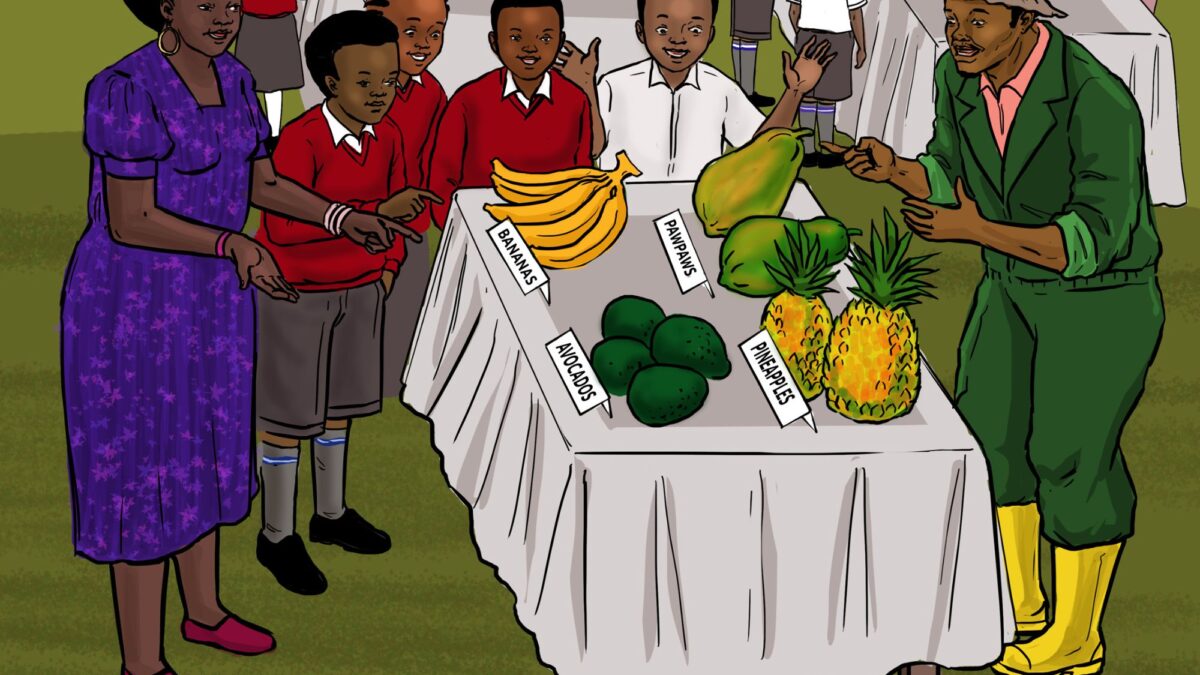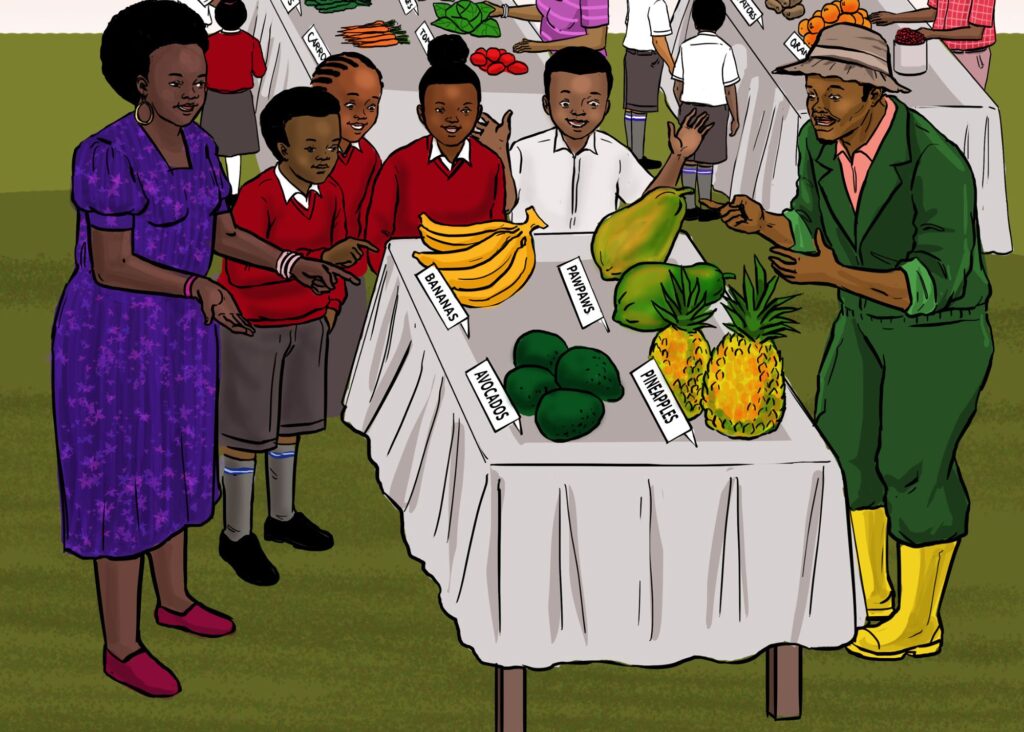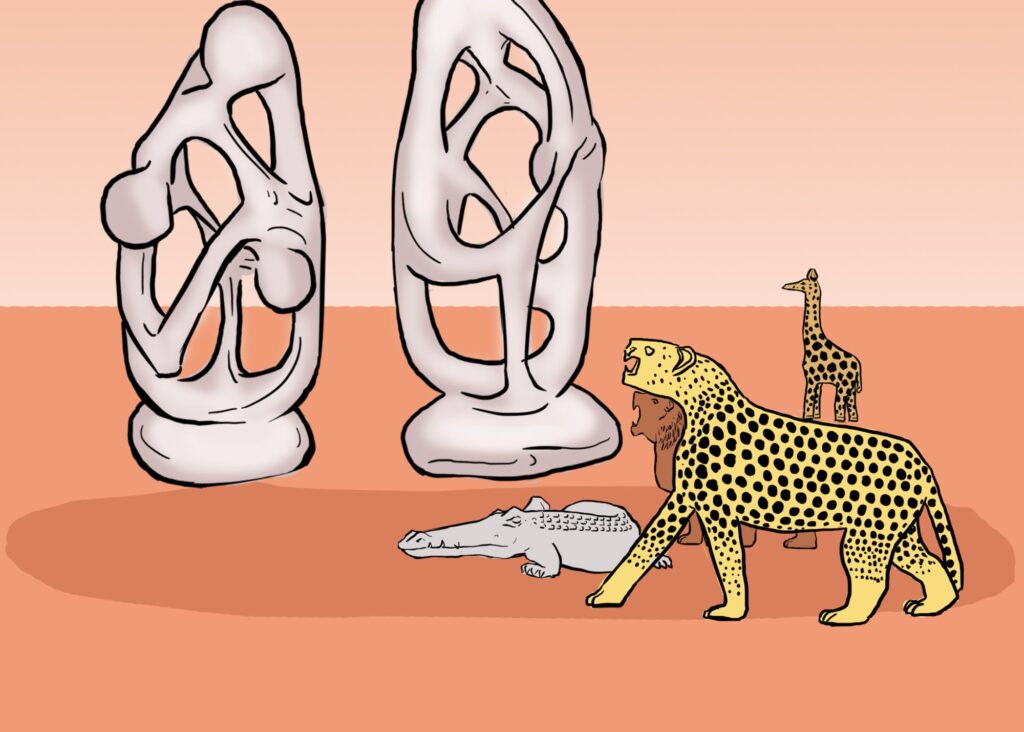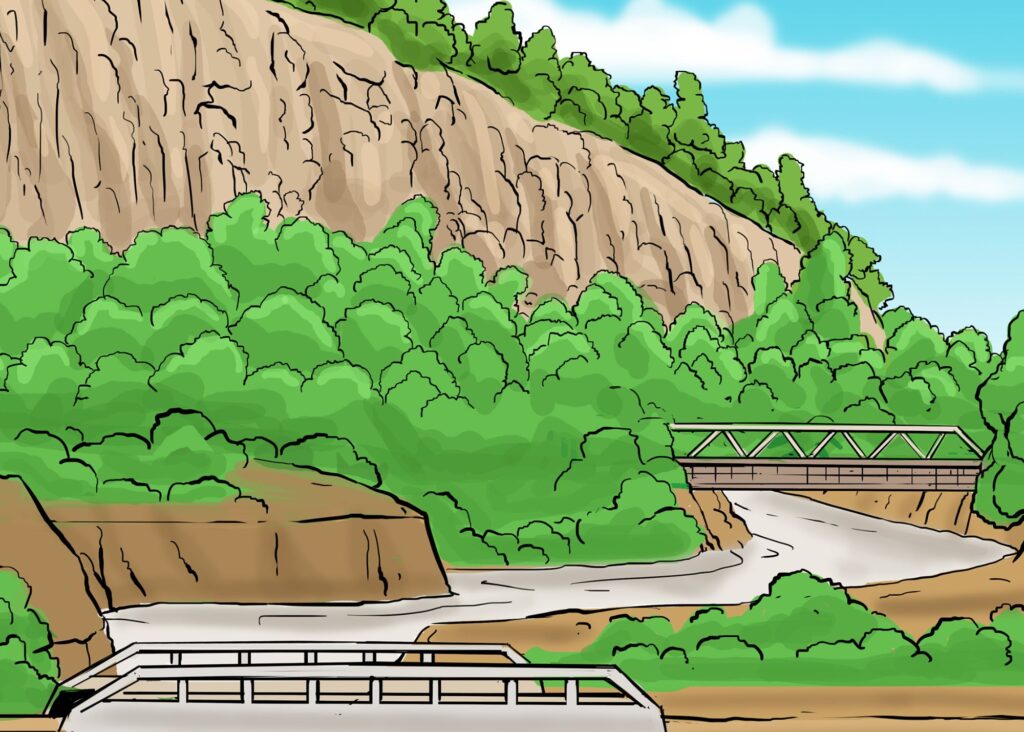Fruitfull Kisii

“Those are some really big fruits!” Waititu pointed at a stand with avocados, bananas, pawpaws, and pineapples.
The class whose attention was focused on the men walking on stilts turned to see where Waititu was pointing and gasped in amazement. Seeing their interest, their class teacher Mr. Mukiri led them to the stand.
“Welcome to Kisii!” A man in overalls and gumboots said to the children who had gathered.
“Are those fruits real or just display items?” Waititu asked.
“They are real! The very best produce from Kisii County, touch and see to believe!” He said bringing three bananas for the class to feel.
“I never knew Kisii produces such good fruits! I used to think Kisii only had soapstone.” Drasti said, handing the banana back to him.

“Oh, you know about soapstone?” The man in overalls asked.
“Yes, my mother has a soapstone tray on the dining table she bought when she traveled to Kisii,” Drasti said.
“What is soapstone?” Waititu asked
“It is a type of stone that is soft and easy to carve,’ Mr. Mukiri answered.

“Like these,” Nyanchama, the man in overalls said, passing around small oval stones that had different colours and drawings on them.
Nyanchama explained to the students that both the soapstone goods and the fruit were sold locally and exported as far as Europe and America.
“Be careful not to drop them; they break easily,” Drasti said remembering what her mother always told her about their soapstone tray.
“Is today your market day?” Waitara asked from the back of the group.
“No, we are here for the Agricultural Show to showcase the quality of our products and hopefully get new clients like hotels. We usually have two main market days, at a place called Daraja Mbili.” Nyanchama said collecting the soapstone curios from the students.
“Are there two bridges there?”Waititu asked.
“Yes! That is exactly why it is called so. The market is between two of Kisii’s main bridges.” Nyanchama answered.
He continued to tell the class that Mondays and Thursdays are the two market days where locals gather and trade.
Waititu noticed that Nyanchama’s stand had the Kisii emblem that has two hills on it and curiously asked Nyanchama what they represent.

“You are an inquisitive young man. Those hills represent the early ancestors of the Kisii who first settled on a hill called Manga; they have the best view of the county. In the olden days they were used to spot unwelcome intruders.” Nyanchama said just as another group of students came to the stand.
The students thanked Nyanchama for his time and for educating them on Kisii’s business prowess.




